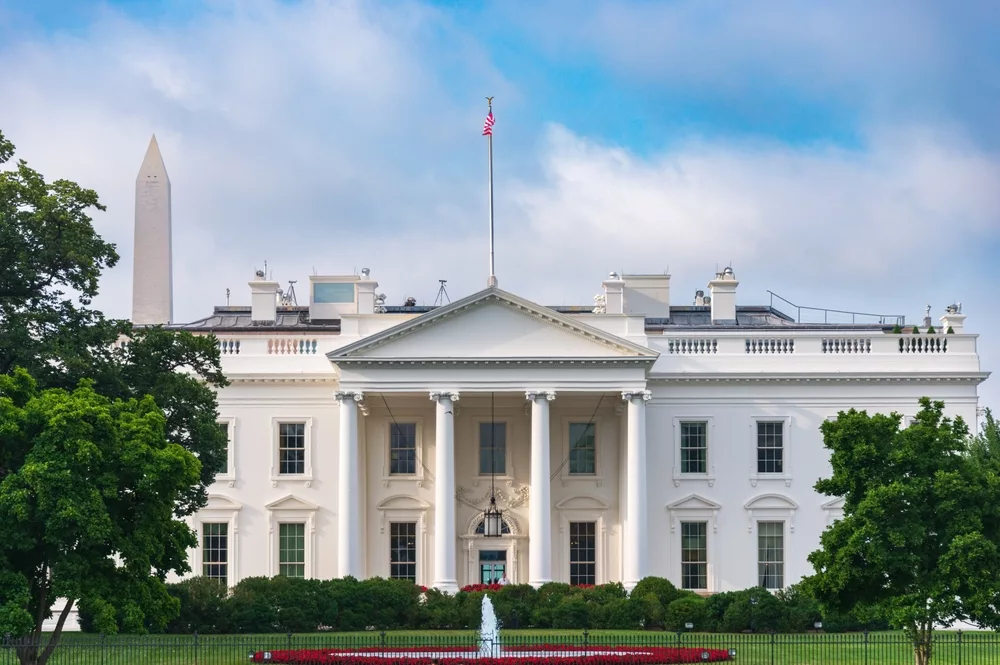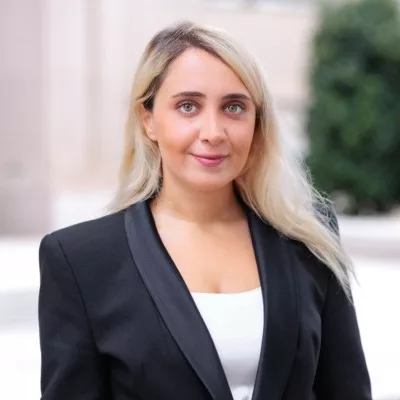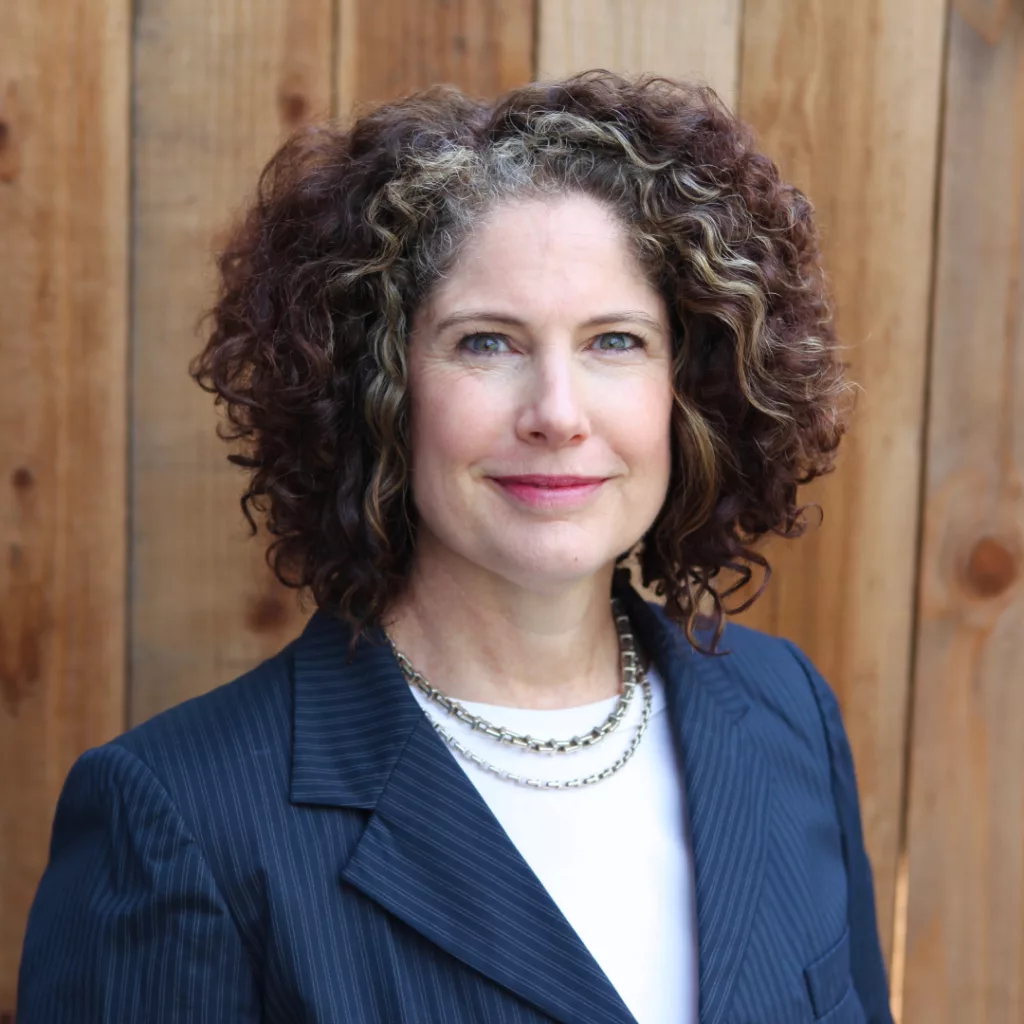
Summary
- Millions of people have transacted trillions of dollars using stablecoins.
- Yet definitions of the category, and therefore people’s understanding of it, remain fuzzy.
- Looking at the traditional banking sector and its history is helpful to understanding the richness and limitations of stablecoins and their usage.
- Visit these pages for more explainers and crypto in action stories.
What are stablecoins?
Stablecoins are stores of value and media of exchange, usually — but not necessarily — pegged to the dollar. They have been described as existing on two axes: from under- to over-collateralized, and from centralized to decentralized. This is useful, especially in helping people understand how technical structure relates to risk and in combating misconceptions about stablecoins.
If we want to understand the richness — and limitations — of the stablecoin design space, one useful lens is the history of banking: what worked, what didn’t, and why. Like many products in crypto, stablecoins will likely speedrun banking history, starting with simple banknotes before expanding the money supply through increasingly sophisticated lending.
Recent stablecoin history
The years since USDC — the most widely adopted US-based stablecoin — launched in 2018 have produced enough evidence to show what has and hasn’t worked, so it’s time to clearly delineate the landscape. Early adopters use fiat-backed stablecoins to transfer and save money. Decentralized-overcollateralized lending protocols produce stablecoins that are useful and reliable, but have seen flat demand. Consumers so far seem to strongly prefer dollar-denominated stablecoins over other (fiat or novel) denominations.
Some categories of stablecoins have outright failed. Decentralized-undercollateralized stablecoins are more capital efficient than fiat-backed or overcollateralized stablecoins, but the highest profile examples have ended in catastrophe. Others categories have yet to materialize: Yield-bearing stablecoins are intuitively exciting — who doesn’t like yield? — but face user experience and regulatory hurdles.
Other kinds of dollar-denominated tokens have also emerged, piggybacking on the successful product-market fit of stablecoins. Strategy-backed synthetic dollars (described in more detail below) are a new product category that has not yet been properly described, similar to stablecoins but not actually meeting important standards for safety and maturity, with riskier yield adopted as investments by DeFi enthusiasts.
We’ve also witnessed the rapid adoption of fiat-backed stablecoins, attractive because of their simplicity and perceived safety; the lagging adoption of asset-backed stablecoins, traditionally the largest share of deposit investments. Analyzing stablecoins through the lens of the traditional banking stack helps explain these trends.
How do stablecoins mimic banking?
To understand how contemporary stablecoins mimic the banking stack, it’s useful to understand the history of banking in the United States. Before the Federal Reserve Act (1913) and especially before the National Banking Acts (1863 –1864), different types of dollars were not treated equally. (For those interested in learning more, the United States had three central banking eras prior to a national currency: The Central Banking Eras [First Bank 1791–1811 and Second Bank 1816–1836], the Free Banking Era [1837–1863], and the National Banking Era [1863–1913]. We’ve tried everything.)
Prior to establishment of the Federal Deposit Insurance Corporation (FDIC) in 1933, deposits had to be specifically underwritten against banking risk. Bank notes (cash), deposits, and checks could have very different “real” values depending on three factors: who issued them, the ease of redemption, and the perceived reliability of the issuer. Why? Because of a tension banks faced (and still face) between making money and keeping deposits safe.
To make money, banks need to invest deposits and take on risk, but to keep deposits safe banks need to manage risk and have cash on hand. Before the mid-to-late 1800s, people judged different forms of money as having different levels of risk — and hence different real values. After the Federal Reserve Act of 1913, a dollar became a dollar (for the most part).
Today, banks use dollar deposits to buy treasuries and equities, make loans, and participate in simple strategies like market making or hedging as permitted by the Volcker Rule, which was introduced in 2008 to reduce insolvency risk by decreasing speculation at retail banks. Lending is a particularly important part of banking and is how banks increase money supply and capital efficiency in the economy.
While retail banking customers might think of all of their money sitting in their deposit accounts, this is not the case. Yet because of federal oversight, consumer protections, broad adoption, and improved risk management, consumers can treat deposits as a unified balance that is relatively risk free. Banks are balancing money-making and risk in the background, while users are mostly ignorant of exactly what banks are doing with their deposits, but largely assured of deposit safety even during instability.
Stablecoins offer users many familiar experiences from bank deposits and bank notes — convenient and reliable store of value, medium of exchange, lending — but in an unbundled, “self-custodiable” form factor. Stablecoins will follow their fiat predecessors. Adoption will start with simple banknotes, but as decentralized lending protocols mature, asset backed stablecoins will grow in popularity.
Why it’s useful to look at stablecoins through the lens of bank deposits
With that background, we can evaluate the three types of stablecoins — fiat-backed stablecoins, asset-backed stablecoins, and strategy-backed synthetic dollars — through the lens of retail banking.
Fiat-backed stablecoins
Fiat-backed stablecoins are similar to US bank notes from the National Banking Era (1865–1913). In this period, bank notes were bearer instruments issued by banks; federal regulation required customers could redeem them for equivalent greenbacks (e.g., special U.S. Treasuries) or other legal tender (“specie”). So while the value of the bank notes could vary depending on the issuer’s reputation, proximity, and perceived solvency, most people trusted bank notes.
Fiat-backed stablecoins operate under the same principle. They are tokens that users can directly redeem for a well-understood, trusted fiat currency — with a similar caveat: While banknotes were a bearer instrument that anyone could redeem, the holder might not live close to the issuing bank. Over time, people accepted that they could find someone to trade with who could then redeem their banknote for a greenback or specie. Similarly, fiat-backed stablecoin users have grown confident that they can use Uniswap, Coinbase, or other exchanges to reliably find someone who values high quality fiat-backed stablecoins at a dollar.
Today, a combination of regulatory pressure and user preference seems to be drawing more and more users toward fiat-backed stablecoins, which constitute over 94% of the total stablecoin supply. Two companies, Circle and Tether, dominate fiat-backed stablecoins issuance, together issuing over $150B in dollar-dominated fiat-backed stablecoins.
But why should users trust fiat-backed stablecoins issuers? After all, fiat-backed stablecoins are centrally issued, and it’s easy to imagine a “bank run” of stablecoin redemptions. To counter these risks, fiat-backed stablecoins benefit from being audited by reputable accounting firms. For instance, Circle undergoes regular audits from Deloitte. These audits are designed to ensure that stablecoin issuers have enough fiat currency or short-term treasuries in reserve to cover any near-term redemptions and that the issuer has enough total fiat collateral to support back every stablecoin 1:1.
Verifiable proof of reserve and decentralized issuance of fiat stablecoins or verifiable proof of reserves are both possible, but not yet implemented. Verifiable proof of reserve would improve auditability and is possible today through zkTLS (zero knowledge transport layer security, also known as web proofs) and similar means, although it still relies on trusted centralized authority. Decentralized issuance of fiat-backed stablecoins may be possible, but substantial regulatory issues stand in the way. For instance, to issue decentralized fiat-backed stablecoins, issuers would need to hold U.S. treasuries onchain with a similar risk profile to traditional treasuries. That isn’t possible today, but it would make it even easier for users to trust fiat backed stablecoins.
Asset-backed stablecoins
Asset-backed stablecoins are the product of onchain loans. They mimic how banks create new money through lending. Decentralized overcollateralized lending protocols like the Sky Protocol (formerly MakerDAO) issue new stablecoins that are backed by onchain, highly liquid collateral.
To understand how this works, consider a checking account. The money in your checking account is part of a complicated system of lending, regulation, and risk management that creates new money. In fact, the majority of the money in circulation, the so-called M2 money supply, is created by banks through lending. While banks use mortgages, auto loans, business loans, inventory financing, and more to create money, lending protocols use onchain tokens as loan collateral thereby creating asset-backed stablecoins.
The system that enables loans to create new money is called fractional reserve banking, which started in earnest with the Federal Reserve Banking Act of 1913. Fractional reserve banking has matured significantly since then with major updates in 1933 (with the establishment of the FDIC), in 1971 (when President Nixon ended the gold standard), and in 2020 (when reserve requirement ratios were reduced to zero).
With each change consumers and regulators became more confident in the systems that create new money through lending. Over 110 years, lending has created a larger and larger portion, now a larger majority, of the U.S. money supply.
There’s a good reason consumers don’t consider all this lending every time they use a dollar. First, money stored in bank deposits is protected by federal deposit insurance. Second, despite major crises like those in 1929 and 2008, banks and regulators have steadily improved their practices and processes to reduce risk.
Traditional financial institutions have used three methods to safely issue a loan:
- Against an asset with liquid markets and quick liquidation practices (margin loans)
- Using large scale statistical analysis over a bundled set of loans (mortgages)
- With thoughtful and bespoke underwriting (business loans)
Decentralized lending protocols still only make up a small portion of the stablecoin supply because they are at the very beginning of this journey.
The most prominent decentralized overcollateralized lending protocols are transparent, well tested, and conservative. For example, Sky, the most prominent collateralized lending protocol, issues asset-backed stablecoins against assets that are: onchain, exogenous, low volatility, and highly liquid (easily sellable). Sky also has strict rules about collateralization ratios as well as effective governance and auction protocols. These properties make sure that even with changing conditions, collateral can be safely sold, protecting the redemption value of the asset-backed stablecoin.
Users can evaluate collateralized lending protocols against four criteria:
- Transparency of governance
- Ratio, quality, and volatility of assets backing the stablecoin
- Security of smart contracts
- Ability to maintain loan collateralization ratio in real time
As with the example of money in a checking account, asset-backed stablecoins are new money created through asset-backed loans, but with vastly more transparent, auditable, and understandable lending practices. Users can audit the collateral underlying asset-backed stablecoins, but can only trust bank executives’ investment decisions with their deposits.
Furthermore, the decentralization and transparency that blockchains enable can mitigate the risks that securities laws are intended to address. This is important for stablecoins because it means that truly decentralized asset-backed stablecoins are potentially outside the scope of securities laws — an analysis that may be limited to asset-backed stablecoins that rely exclusively on digitally native collateral (as opposed to ‘real-world assets’). This is because such collateral can be safeguarded with autonomous protocols, as opposed to centralized intermediaries.
As more of the economy moves onchain, expect two things: first, for more assets to be candidates for the collateral used in lending protocols; and second, for asset-backed stablecoins to be a larger portion of onchain money. Other types of loans will likely eventually be safely issued onchain to further extend the onchain money supply. With that said, just because users can evaluate asset-backed stablecoins does not mean every user will want to take on that responsibility.
Just as it has taken time for traditional bank lending to grow, regulators to lower reserve requirements, and lending practices to mature, it will take time for onchain lending protocols to mature. So it will be a while before more people can easily transact with asset-backed stablecoins as readily as we can transact with fiat-backed stablecoins.
Strategy-backed synthetic dollars
Recently, some projects have been offering $1-denominated tokens that represent a combination of collateral and an investment strategy. These tokens are often lumped in with stablecoins, but strategy-backed synthetic dollars should not be considered stablecoins. Here’s why.
Strategy-backed synthetic dollars (SBSDs) expose users directly to actively managed trading risk. They are typically centralized, undercollateralized tokens layered with financial derivatives. More accurately, SBSDs are dollar shares in an open-ended hedge fund — a structure that is both difficult to audit and that could expose users to centralized exchange (CEX) risk and asset price volatility, if, for instance, there were significant market movements or a persistent downward sentiment.
These attributes make SBSDs a poor choice for a reliable store of value or medium of exchange, which are the main purpose of stablecoins. While SBSDs can be constructed in many ways, with varying levels of risk and stability, all of them offer a dollar-denominated financial product that people may want in their investment portfolios.
SBSDs can be built on many strategies — for instance, the basis trade or participation in yield-generating protocols like the restaking protocols that help secure actively validated services (AVSs). These projects manage risk and reward, typically allowing users to earn yield on top of a cash position. By managing risk with earnings, including by evaluating AVSs for slashing risk, seeking higher yield opportunities, or monitoring the basis trade for inversion, projects can produce a yield-bearing SBSD.
Users should deeply understand the risks and mechanisms of any SBSD before using it (as with any novel instrument). DeFi users should also consider the consequences of using SBSDs in DeFi strategies due to the substantial cascading consequences of a depeg. When an asset depegs, or suddenly loses value relative to its tracking asset, derivatives that rely on price stability and consistent yield can destabilize suddenly. But underwriting the risk of any given strategy can be hard or impossible when the strategy includes centralized, closed source, or unauditable components. You have to know what you’re underwriting to underwrite it.
While banks do run simple strategies with bank deposits, they’re actively managed and a de minimis part of the overall capital allocation. It’s hard to use these strategies to back stablecoins because they must be actively managed, which makes those strategies hard to reliably decentralize or audit. SBSDs expose users to more concentrated risk than banks allow in deposits. Users would be right to be skeptical if their deposits were held in such a vehicle.
In fact, users have been wary of SBSDs. Despite their popularity among risk-favoring users, few users are transacting with them. Further, the US SEC has brought enforcement actions against issuers of “stablecoins” that functioned like shares in investment funds.
Outlook
Stablecoins have arrived. There are over $160B of stablecoins used in transactions around the globe. They’ve settled into two major categories: fiat-backed stablecoins and asset-backed stablecoins. Other dollar-denominated tokens, like strategy-backed synthetic dollars, have grown in mindshare, but don’t fit the definition of a stablecoin as fit for transaction or storing value.
Banking history is a great proxy for understanding the category — stablecoins must first consolidate around a clear, understandable, and trivially redeemable bank note, similar to how federal reserve banknotes won over mindshare in the 19th and early 20th centuries. Over time, we should expect asset-backed stablecoins, issued by decentralized overcollateralized lenders, to increase in volume, just as the M2 money supply has been increased by banks lending on deposits. And lastly, we should expect DeFi to continue to grow, both by creating more SBSDs for investors and by increasing the quality and quantity of asset-backed stablecoins.
Stablecoins are already the cheapest way to send a dollar, meaning that real opportunities exist for stablecoins to reset the market structure in the payments industry, creating opportunities for incumbents and, even more importantly, for startups to build on a new platform of frictionless and cost-free payments.
A version of this article first appeared on partner site, a16zcrypto, in November 2024.

























